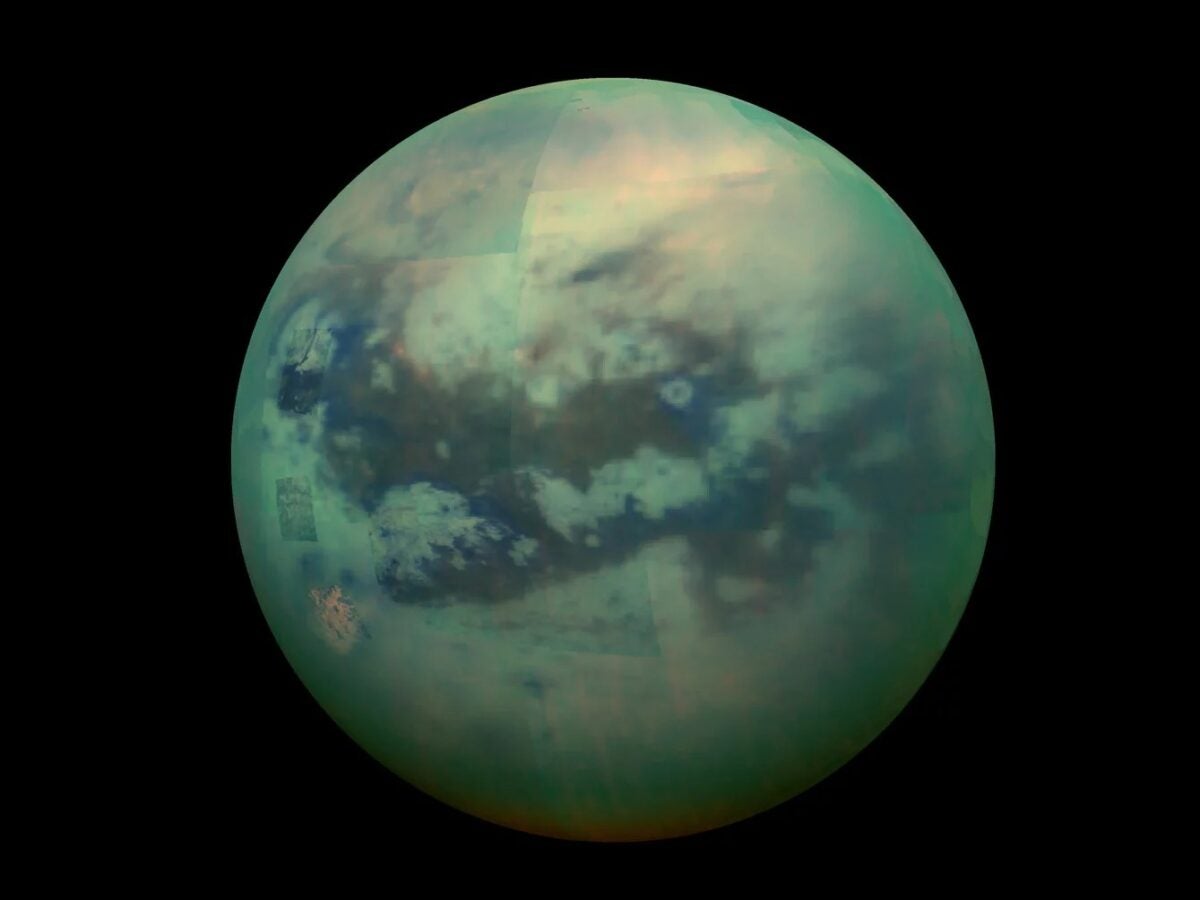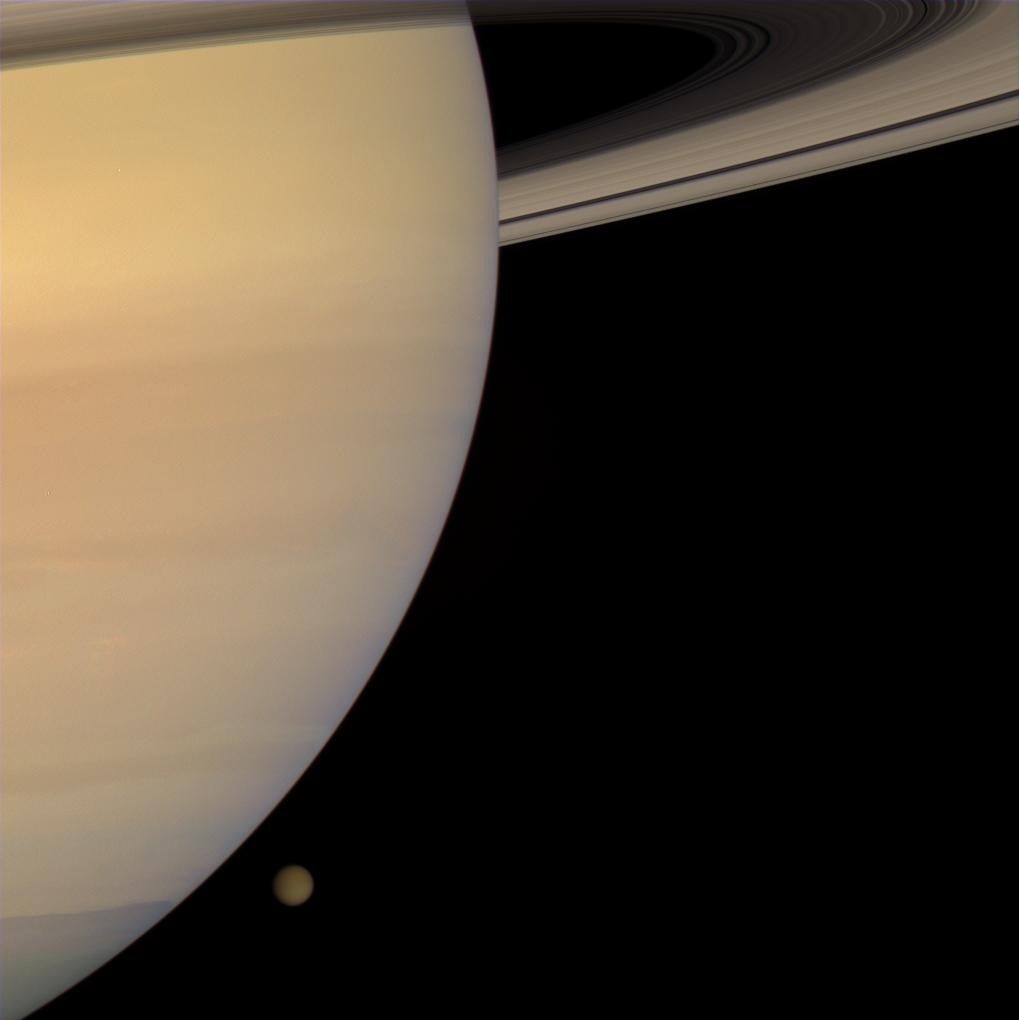Archival Cassini data reveal ripples in bodies of liquid ethane and methane.

Composite image of Titan taken by the Cassini spacecraft. Credit: NASA.
An international team of planetary scientists studied archival data from the Cassini spacecraft, designed to study Saturn and its satellites, which yielded new clues about three strange oceans on the surface of the planet's largest moon, Titan.
The research, published in Nature CommunicationsThey collected Cassini data obtained through bistatic radar experiments between March 2006 and November 2016 during its outbound phase (when the spacecraft is at its farthest) to gather clues about Titan, the solar system's second-largest moon. They found evidence of wave activity and that the materials that make up the oceans are not equally proportioned.
The team used data from the Radio Science Subsystem to create a bistatic radar system, in which the receiver and transmitter are placed far enough apart to gather some spatial data based on how radio waves bounce off a target and are received by the receiver — a kind of triangulation that can provide richer data than conventional radar. But in this case, the receiver was NASA’s Deep Space Network on Earth.
Swimming on the surface
Titan is the only moon in the solar system with a substantial atmosphere, allowing liquid to pool on the surface. However, it is too cold for water to exist on the surface as anything more than bedrock, so the seas are composed of ethane and methane. The researchers analyzed different densities of the bodies of liquid to determine the proportions of ethane and methane.
“I want to stress how difficult these experiments were, because the experiment basically requires Cassini to point it at the surface of Titan and for the reflection to be received back on Earth, 1.5 billion kilometers away,” says study author Valerio Poggiali of Cornell University.
Related: What Cassini taught us | Why did Cassini crash into Saturn?
“We also have indications that the rivers that feed the seas are pure methane,” Poggiali said in a press release, “until they flow into the open liquid seas, which are richer in ethane.” So when these two liquids mix, the bodies differ in viscosity and density, even if only by small amounts. This is an especially important finding because NASA has funded studies to explore the possibility of one day using a submersible in the seas to study their depths and understand what interactions they might have with an underground liquid water ocean, if any.

Titan is said to have a similar composition to early Earth, but whatever particular chemistry is linked to potential life, it raises other mysteries: where the methane comes from and how it is replenished on the surface in a similar way to the water cycle on Earth. This may be left to future missions, such as the Dragonfly helicopter, a planned NASA mission to examine Titan's surface.
There's also not as much ethane on the surface as you'd expect, potentially meaning it goes through a similar cycle to Earth. “On the surface we don't see – we would expect tons[of methane]covering the area, but it's not the case. So there must be places where all the ethane is sequestered and the methane is replenished,” Poggiali says. He added that there's a chance cryovolcanism – where liquids bubble up from beneath the surface from icy bedrock – plays a role.
Waves impossible to surf
In addition to the chemical composition, the team was able to obtain information about the surface waves of the seas, as well as hints of Saturn's tidal effects. The waves were small on the bodies of water, around 3.3 millimetres, well below surfing conditions. A larger increase was observed in height where rivers meet oceans, the strongest disturbance being about 5.2 mm, which could also indicate tidal interactions. Poggiali compares the waves to “ripples on the surface because, so far, no large-scale waves have been observed.”
This could also mean that waves have a minimal effect on coastal erosion along Titan's beach shores. Such minimal wave activity and barely detectable tidal activity could be an advantage for any future submersibles.
There's still plenty of archival data from Cassini that could help reveal more details about Titan. A combination of that data and the upcoming Dragonfly mission could help resolve some of the questions raised by the study, but it's also likely to raise a few more.








Leave feedback about this